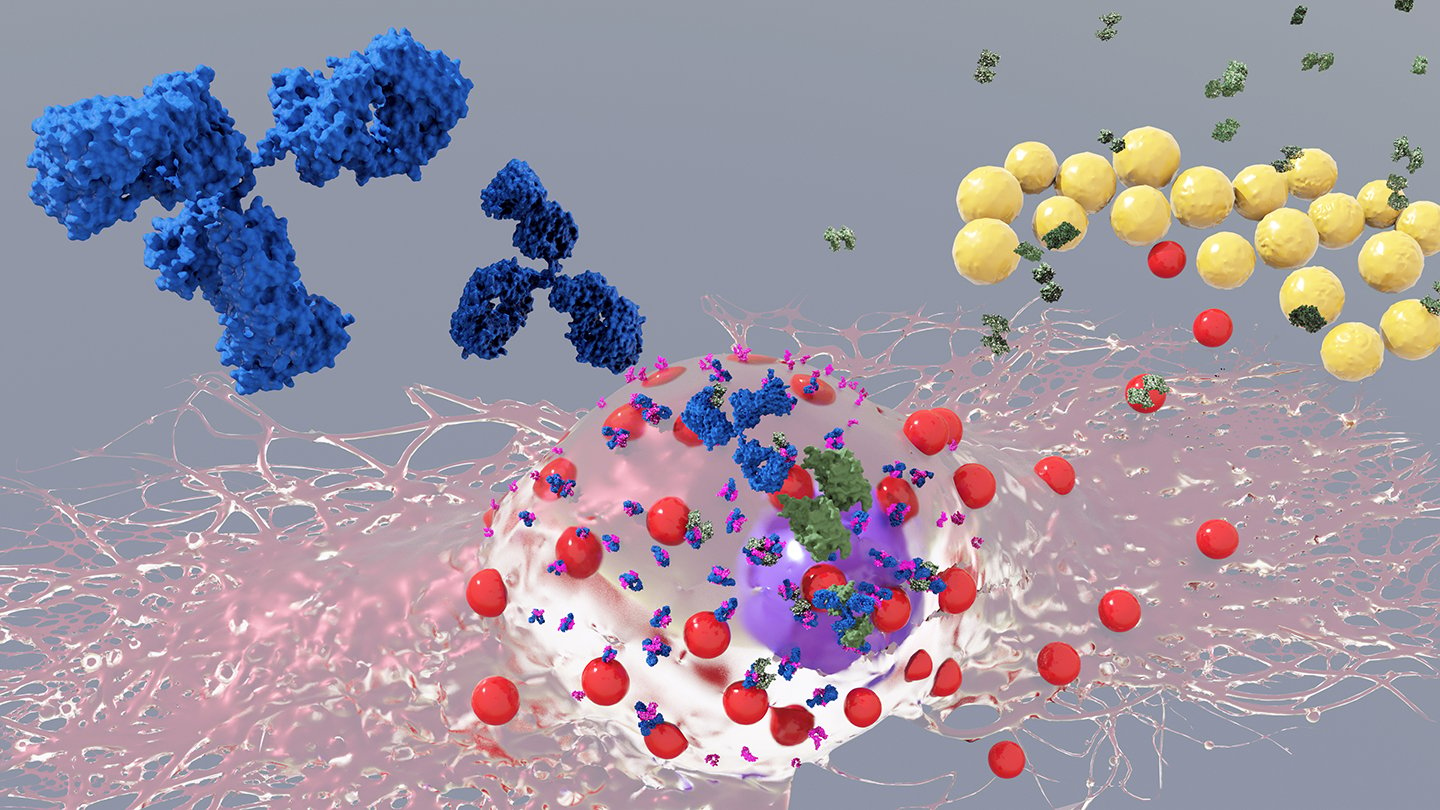
Sneezing, runny nose, watery eyes, or even shortness of breath. According to estimates by the Ärzteverband Deutscher Allergologen (ÄDA, German Medical Allergy Association), around 20 to 30 million people in Germany suffer from allergies such as hay fever, a drug allergy, or a food allergy. And this trend is on the rise. Thes types of allergic reactions are usually due to the release of histamine, proteases, or cytokines from cells of the innate immune system.
These so-called “mast cells” are activated by IgE antibodies. These make up the components of a specific immune response. If these antibodies are sensitive to certain allergens, they in turn activate the mast cells with each new contact. These then release histamines, proteases, or various cytokines. That person subsequently develops typical allergic symptoms. Up until now, however, the evolutionary background of this well-rehearsed system has remained unclear. Or why this system has survived throughout the course of evolution.
Positive sides to allergic reactions
In a joint study by the CeMM – Research Center for Molecular Medicine of the Austrian Academy of Sciences (ÖAW), the Medical University of Vienna, and the Stanford University School of Medicine, researchers have come one step closer to finding the answer to this question. They have discovered that IgE antibodies, together with mast cells, are able to increase the body’s resistance to bacterial infections
The assumption has been around for a long time that the interaction of IgE with mast cells is not just negative for the body where allergies are concerned. Previous studies had already shown that mast cells play a role in the innate immune response to the venom of certain snakes and the honeybee. Building on these studies, scientists have now examined the importance of the interaction of mast cells and IgE antibodies in the defense against toxic organisms. Especially when dealing with pathogenic bacteria. They have published the results of the study in the scientific journal Immunity.
Because of “its enormous clinical relevance and its broad range of toxins,” the researchers chose the antibiotic-resistant bacterium Staphylococcus aureus as the pathogen model. This is considered one of the most feared hospital germs. As part of their research, they infected genetically modified mice with the pathogen. They also studied in vitro mast cell models in order to decode the functions of selected components of the IgE effector mechanisms.
Resistance to bacterial infections
It was found that the mice that had experienced mild skin infections with S. aureus developed specific IgE antibodies against bacterial components. This immune response made the mice more resistant to severe secondary lung or skin and tissue infections. Genetically-modified mice lacking the IgE effector mechanism, or mast cells, did not build up the resistance that is needed to fight severe secondary infections.
The authors write that these findings would suggest that the interaction of the IgE effector mechanism with mast cells, (which is often only recognized today within allergic contexts), might not only be pathological but also beneficial. “The defense against toxin-producing pathogenic bacteria could therefore be an important biological function of the ‘allergy module’. Moreover, this function – seen from an evolutionary perspective – might be the reason why this immunological interaction has persisted throughout the course of human evolution. And this happens, despite the fact that it can even cause life-threatening reactions in those cases where there is a particular sensitivity towards other foreign substances.
Publication:
„IgE Effector Mechanisms, in Concert with Mast Cells, Contribute to Acquired Host Defense against Staphylococcus aureus.“ Authors: Philipp Starkl, Martin L. Watzenboeck, Lauren M. Popov, Sophie Zahalka, Anastasiya Hladik, Karin Lakovits, Mariem Radhouani, Arvand Haschemi, Thomas Marichal, Laurent L. Reber, Nicolas Gaudenzio, Riccardo Sibilano, Lukas Stulik, Frédéric Fontaine, André C. Mueller, Manuel R. Amieva, Stephen J. Galli, Sylvia Knapp, Immunity, 2020 DOI: 10.1016/j.immuni.2020.08.002
Title picture: Not only allergies but also positive health benefits can result when antibodies and cells work together. © CeMM/ÖAW








